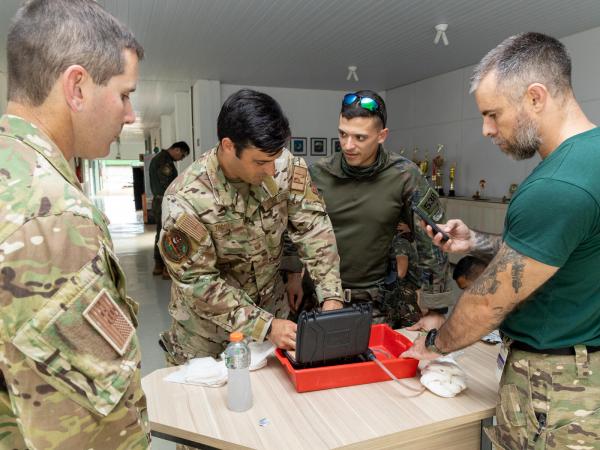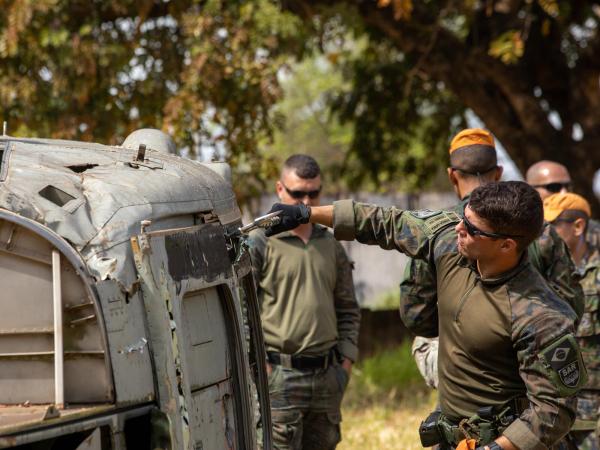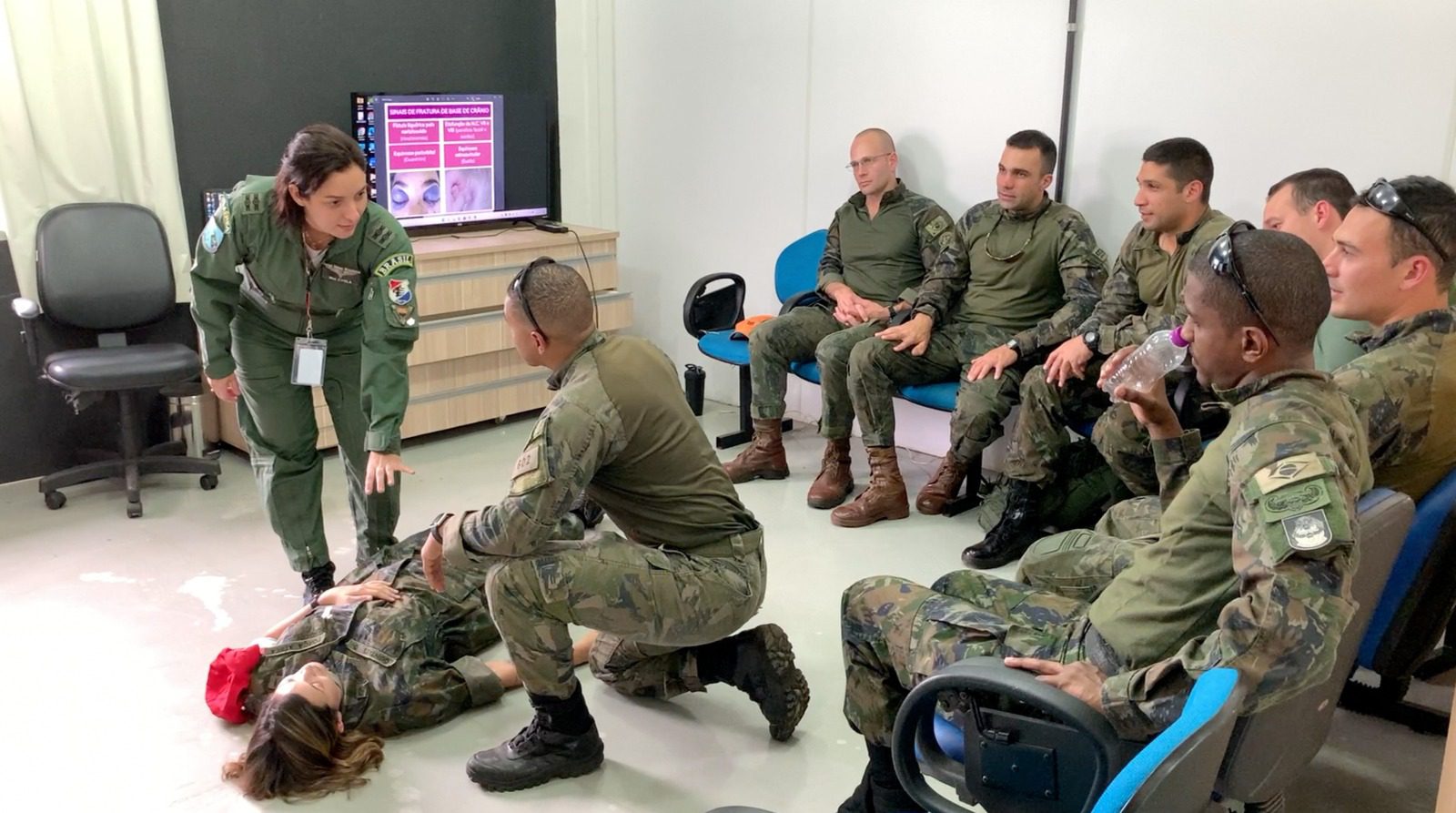Activities carried out at EXCON Tápio 2023 simulate tactical air rescue of victims in critical condition
Air Force Agency, by Lieutenant Eniele Santos
In the most critical situations, in which safety is compromised and human life is at constant risk, military personnel specialized in Tactical Pre-Hospital Care (APH-T) show unwavering courage. Trained by the Aerial Rescue Squadron (EAS) – a unit whose mission is to provide specialized training for Brazilian Air Force (FAB) search and rescue (SAR) crews and teams – these soldiers, equipped with advanced medical knowledge and state-of-the-art instruments, operate on the front lines, seeking to rescue and stabilize the injured quickly and effectively.
Theoretical training: MARCH Protocol

During the Joint Exercise (EXCON) Tápio 2023, APH-Tactical training workshops were held with the rescue men, with the aim of retraining them in the functions they perform in real operations. For training of this nature, there is a worldwide protocol, Tactical Combat Casualty Care (TC-3), which follows the sequence of acronyms, MARCH, in which each letter symbolizes a care that must be followed, in order of priority: Massive Hemorrhage, Airway, Breathing, Circulation and Hypothermia.
“Because I’m a neurologist, here at EXCON Tápio 2023 I’m responsible for the letter ‘H’, which corresponds to instructions on assessing the level of consciousness, responsiveness scales and the signs that military personnel may have in combat as a result of traumatic brain or spinal cord injury. In this way, we were able to pass on all this knowledge using examples of clinical cases, with the intention of teaching them everything they need to do in combat, with the aim of saving lives,” explains the member of the Air Force Health Directorate (DIRSA), Medical Major Carla Isabel dos Santos Silvestre.


In this regard, Medical Captain Patrícia Bastos de Aguiar Martins Costa, from the First Squadron of the Eighth Aviation Group (1º/8º GAV) – Falcon Squadron, highlights the letter ‘C’ of the MARCH protocol, which refers to circulation, in which the entire circulatory part is assessed, i.e. all issues related to perfusions, pulse and level of consciousness. For this reason, there are instructions for venous and intraosseous access, which is the main one in a tactical environment, due to its speed and effectiveness.
“A trauma victim, for example, is often in a state of shock, so the veins and vessels are constricted. This is why intraosseous access is essential for stabilizing the injured person,” she explains.
The efficient coordination of the military personnel involved in the mission is paramount to the success of operations in war scenarios. Highly trained teams work together to ensure a rapid and effective response to the wounded. In situations like these, helicopters and aircraft – such as the SC-105 Amazonas, the H-60 Black Hawk, the H-36 Caracal, among others – are often used to carry out medical evacuations (EVAM).
According to Medical Captain Vinicius Guimarães Tinoco Ayres, from the Hospital de Aeronáutica de Canoas (HACO), an instructor specializing in APH, the medical tools are passed on to the rescuers so that, when they find a victim in hard-to-reach places, they can assess their health, especially those related to bleeding and breathing control. “We train these soldiers to act quickly and accurately. They are often the first to reach the victims. It’s extremely necessary for them to know everything that needs to be done to stabilize them, so that they are not in danger of dying until they reach hospital,” explains Captain Ayres.


Theory into practice: extricating victims
With the support of the Mato Grosso Sul State Military Fire Department (CBMMS) and the New York State Air National Guard (NYANG), to close the first week of EXCON Tápio 2023 activities, PARA-SAR teams carried out various training activities and were able to put everything they had learned into practice. They were able to practice techniques for accessing aircraft and collapsed structures in aviation accident situations, as well as expanding them to rescue victims.
“This activity is put into practice in various real-life situations, for example when disasters and public calamities occur. With the techniques taught, rescuers can access these collapsed structures more technically, using the appropriate tools, as well as the methods for safely extracting victims from inside these structures,” explains FAB SAR Team Special Operator, Medical Captain Felipe Lessa.
Specialized in rescue techniques, the CBMMS was instrumental in presenting tools for extricating victims. “They are trapped in an aircraft and need to be rescued. In order to do this, we trained in the removal and pre-hospital care actions on site, providing rescue and salvage,” says CBMMS Sub-Lieutenant Hamilton Junior.
Photos: Sergeant Müller Marin/ CECOMSAER – Video: Sergeant André Souza/ CECOMSAER
